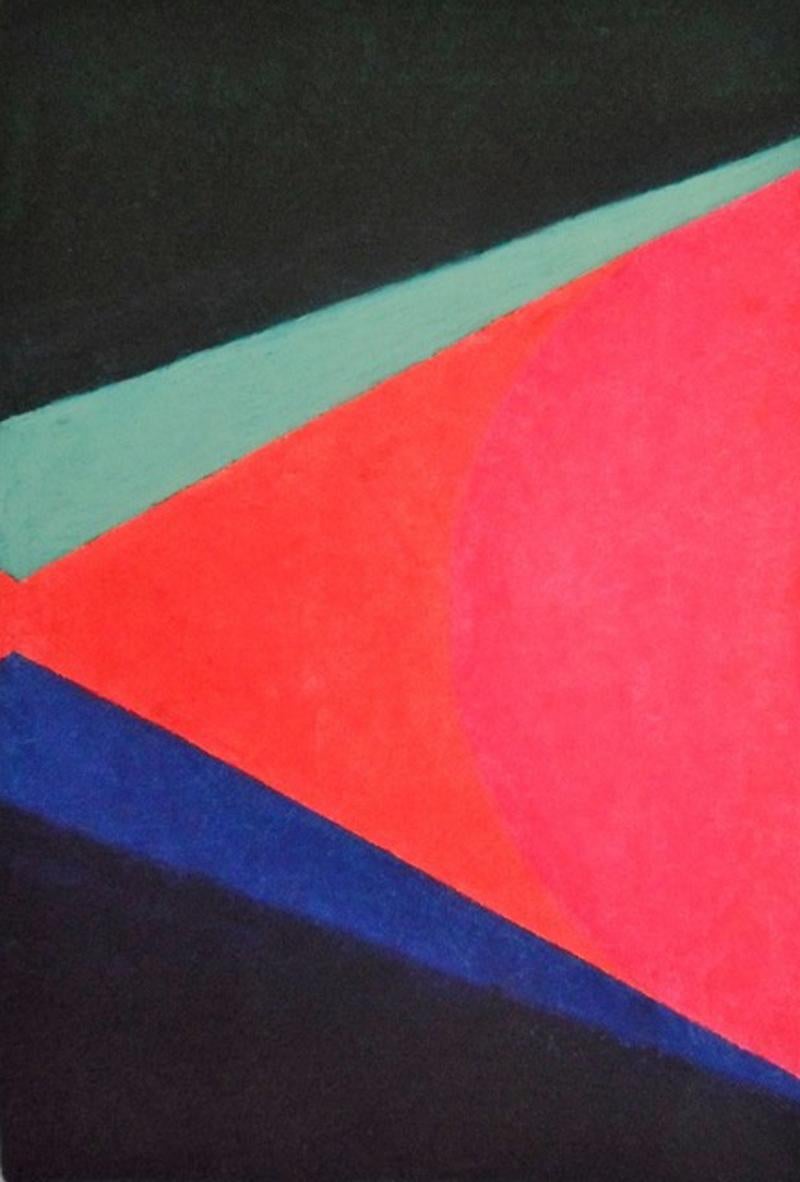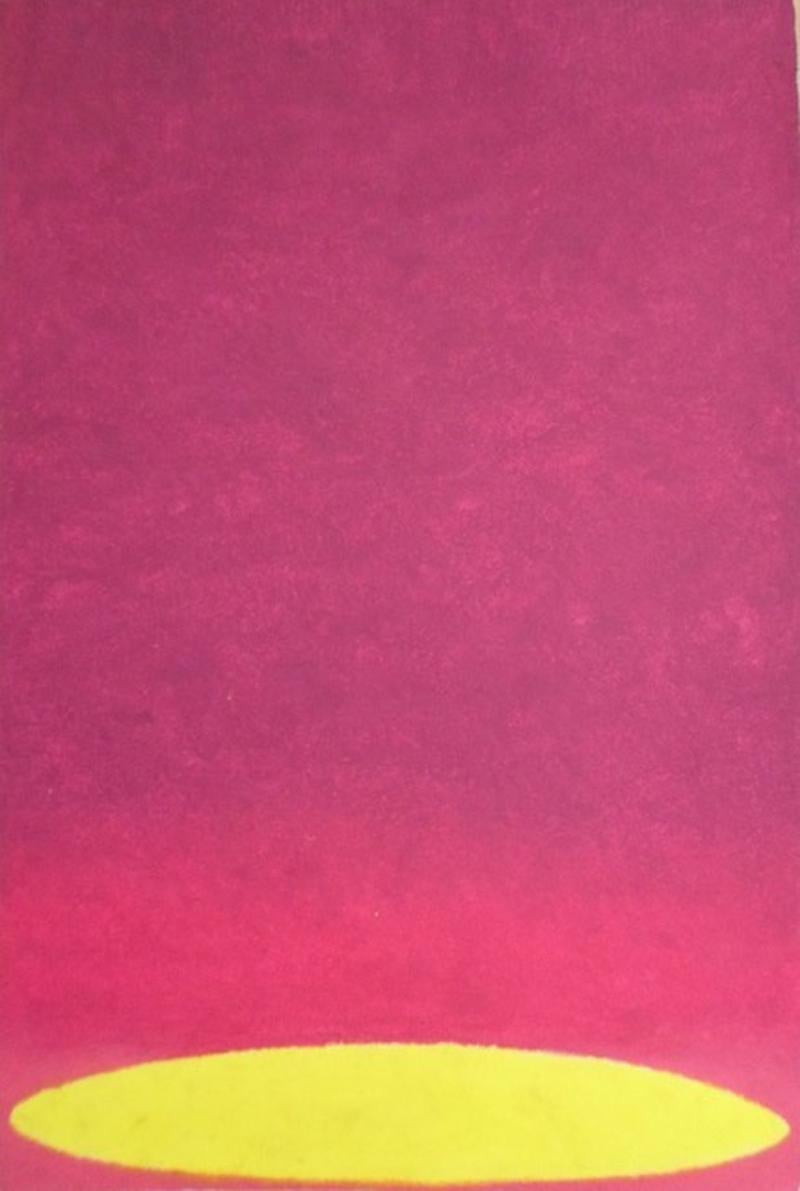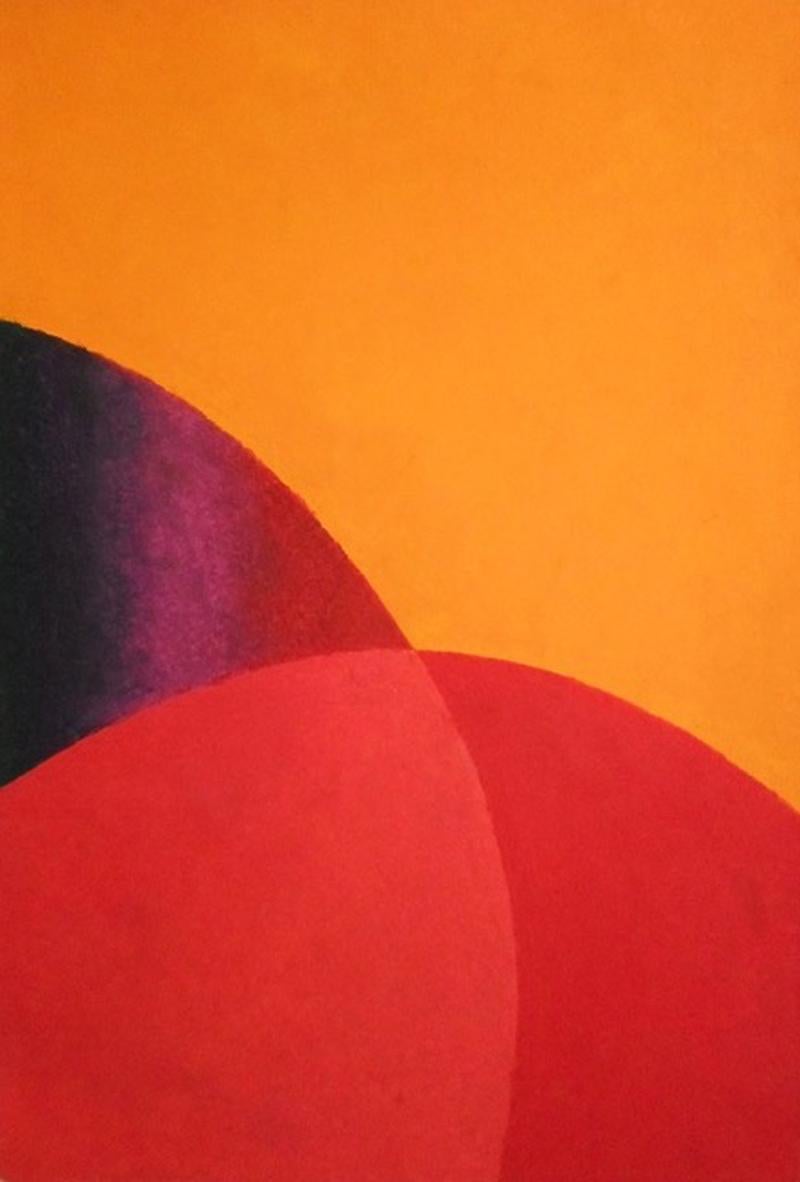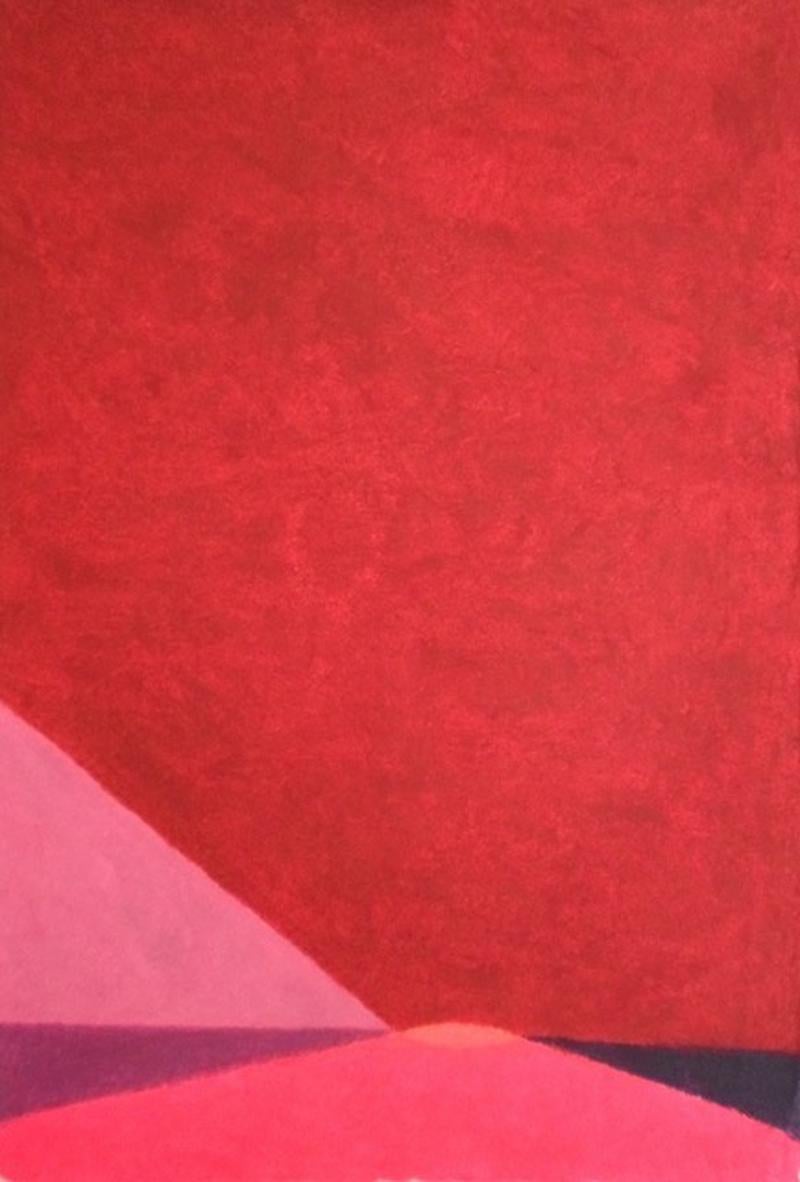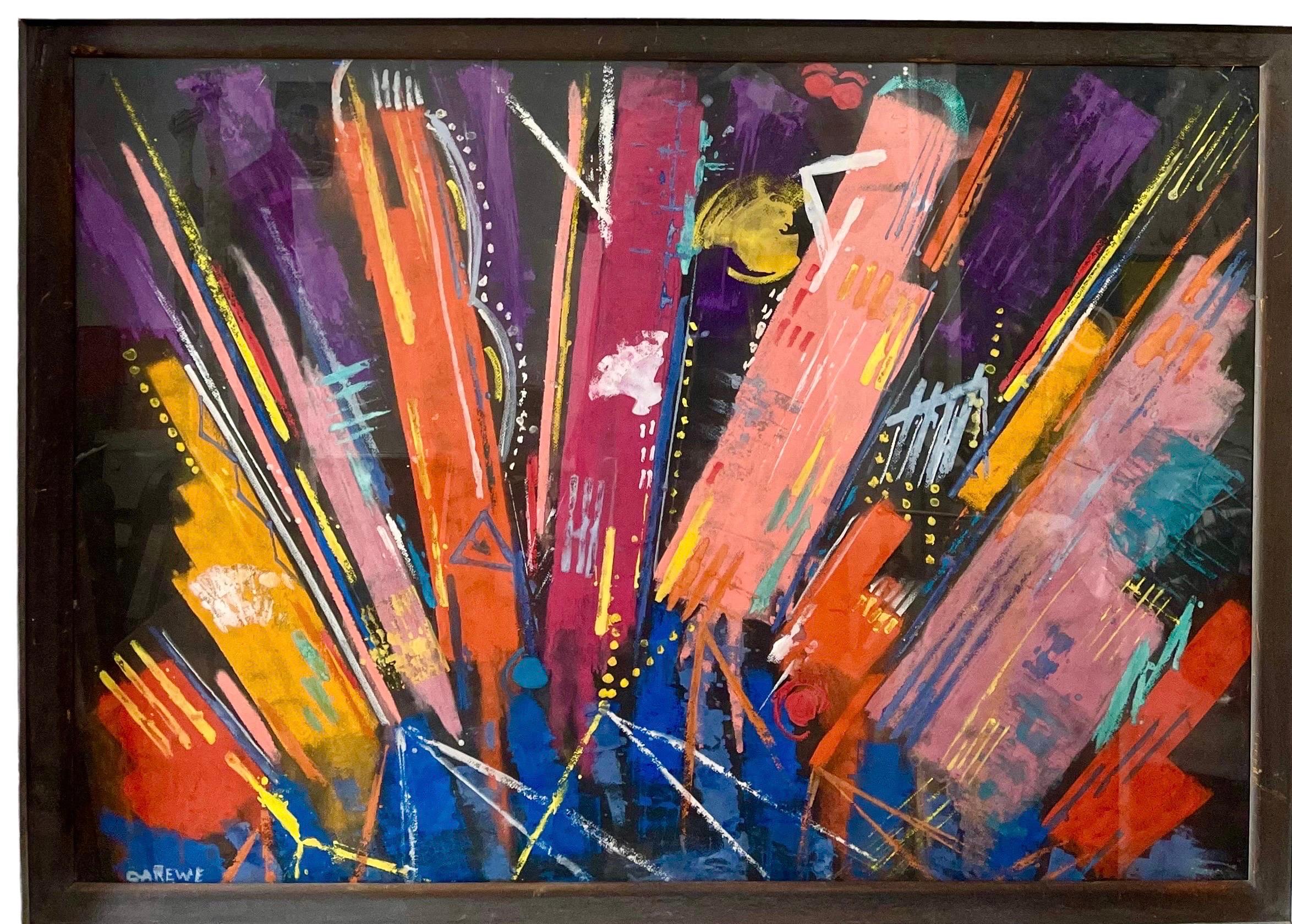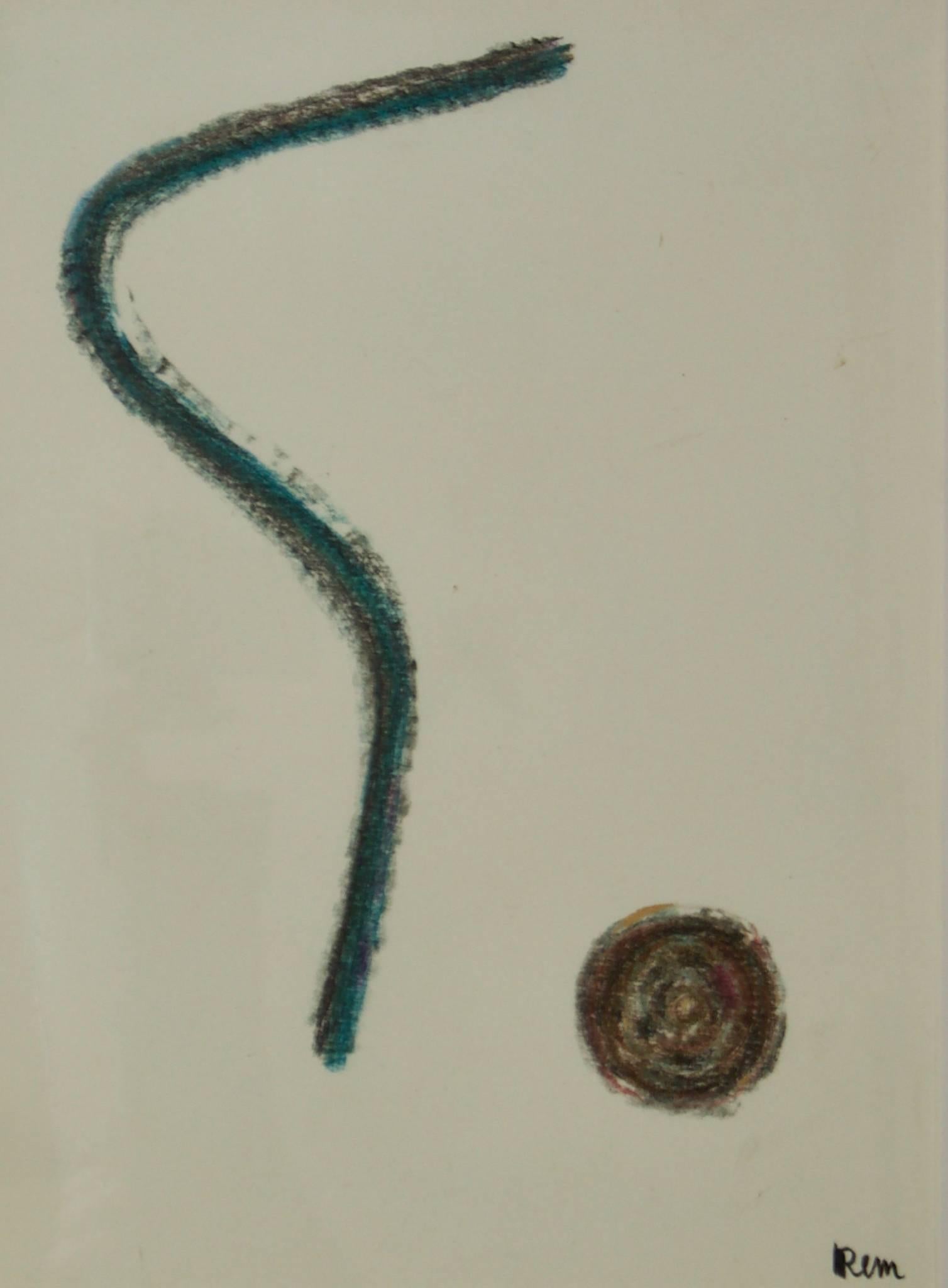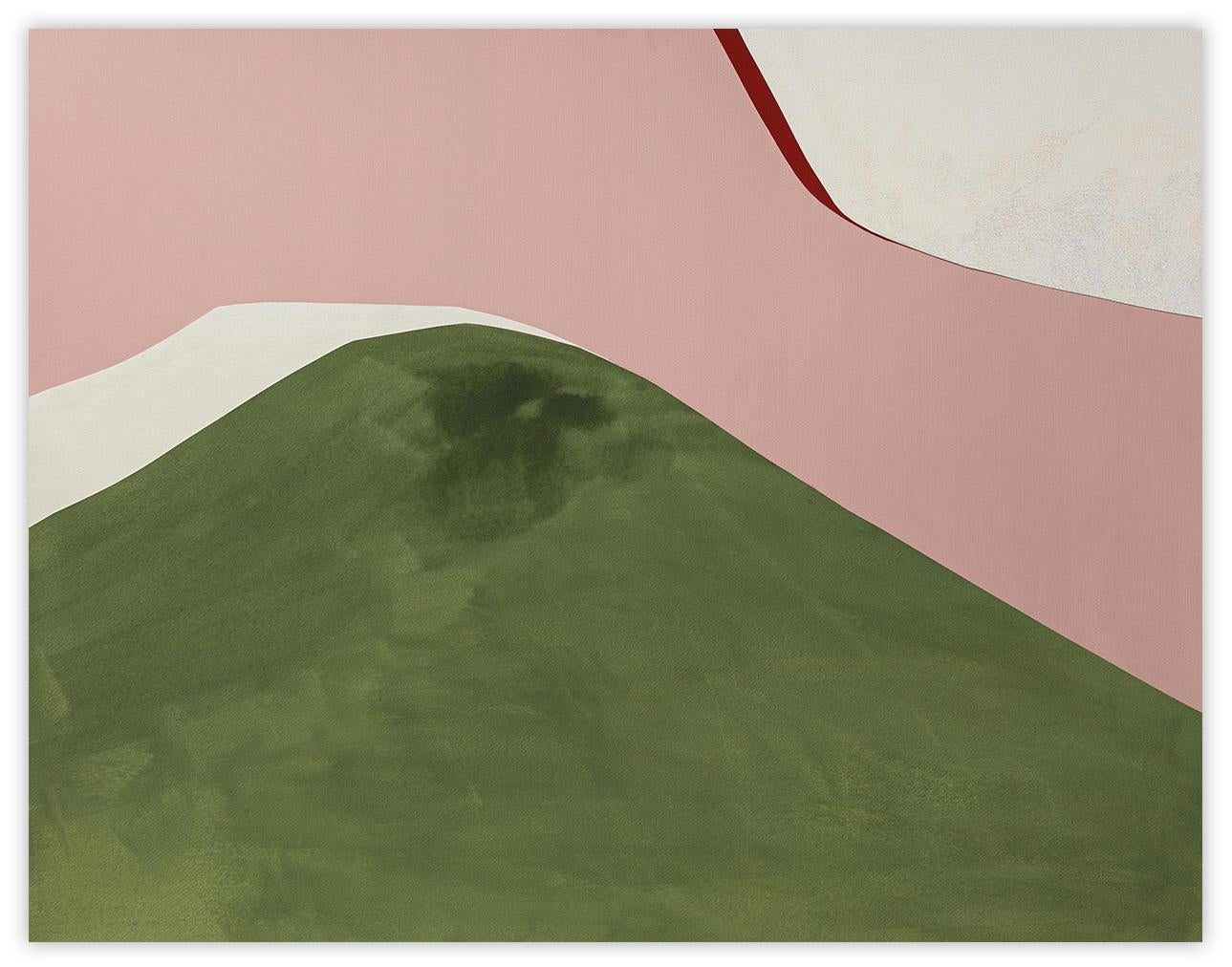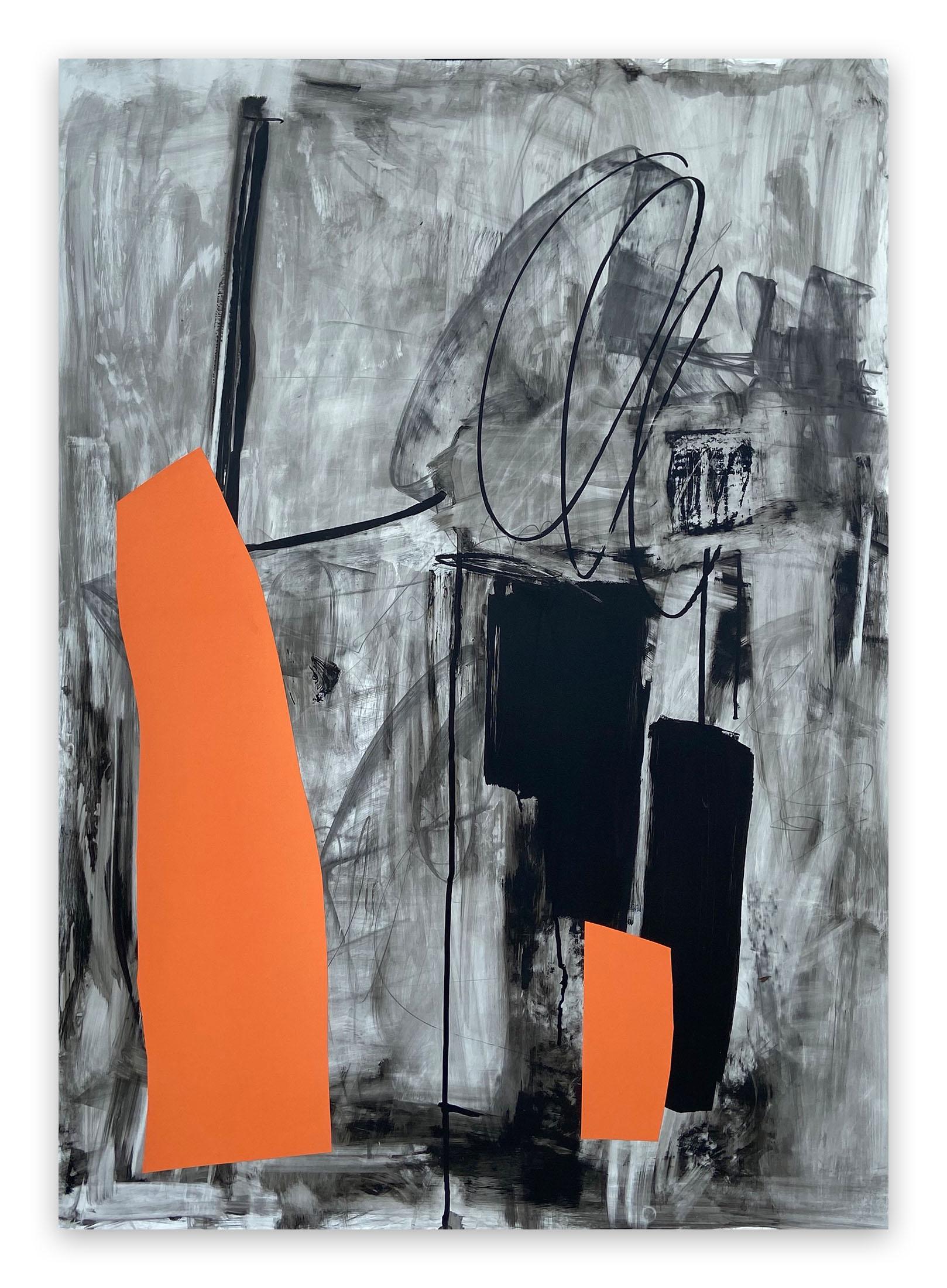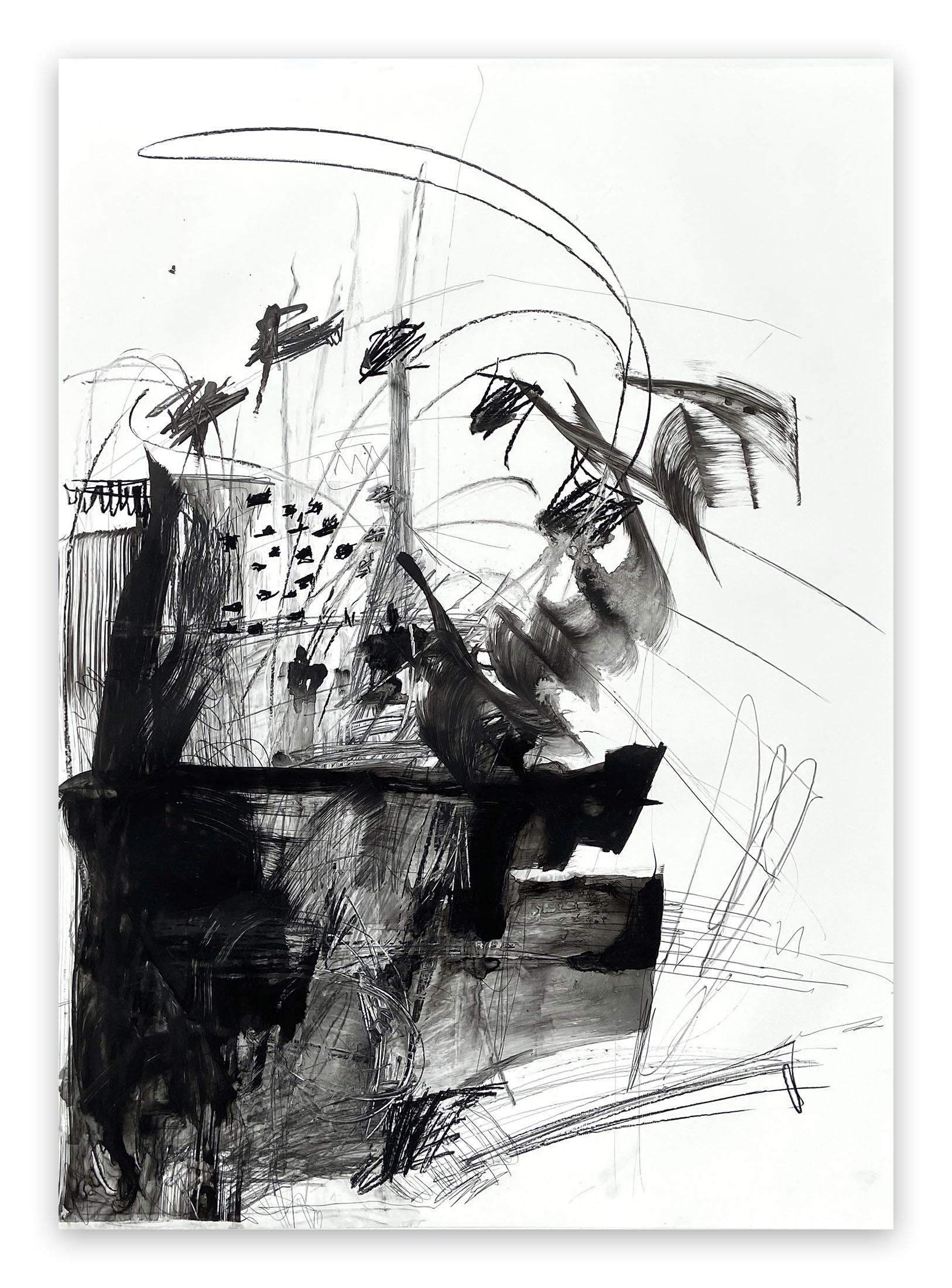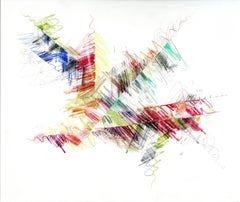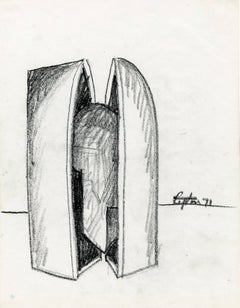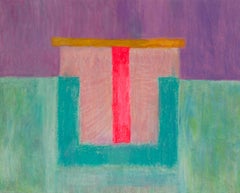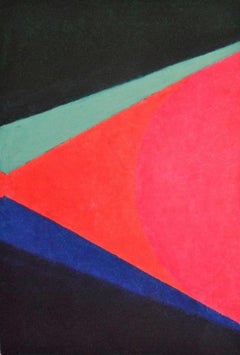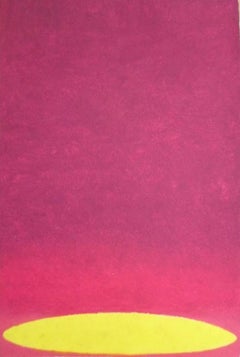
Mr. Ebo's Circus IX
View Similar Items
Want more images or videos?
Request additional images or videos from the seller
1 of 4
Moe BrookerMr. Ebo's Circus IX1977
1977
About the Item
- Creator:Moe Brooker (1940, American)
- Creation Year:1977
- Dimensions:Height: 8 in (20.32 cm)Width: 6.25 in (15.88 cm)
- Medium:
- Movement & Style:
- Period:
- Condition:
- Gallery Location:Fairlawn, OH
- Reference Number:Seller: FA90761stDibs: G140414140466
About the Seller
5.0
Recognized Seller
These prestigious sellers are industry leaders and represent the highest echelon for item quality and design.
Platinum Seller
These expertly vetted sellers are 1stDibs' most experienced sellers and are rated highest by our customers.
Established in 1978
1stDibs seller since 2013
713 sales on 1stDibs
Typical response time: 1 hour
Associations
International Fine Print Dealers Association
More From This SellerView All
- UntitledBy Peter MarksLocated in Fairlawn, OHUnsigned Provenance: Estate of the artist Peter Marks (1935 -2010) Peter Marks was born in New York City on January 18, 1935. A lifetime New Yorker, Marks graduated from the Hig...Category
21st Century and Contemporary Abstract Abstract Drawings and Watercolors
MaterialsCrayon
- Preliminary drawing for the sculpture CatacombsBy Seymour LiptonLocated in Fairlawn, OHSigned and dated lower left Provenance: Estate of the artist Michael and Alan Lipton (sons) Wilkes University, Wilkes Barre, PA De-accessed 2017 Note: Lipton did a large number of preliminary...Category
1970s Abstract Geometric Abstract Drawings and Watercolors
MaterialsOil Crayon
- untitledBy Virginia DehnLocated in Fairlawn, OHUnsigned Authenticated verso by the artist's nephew, Andrew Lowe Provenance: Estate of the ArtistCategory
Mid-20th Century Abstract Expressionist Abstract Drawings and Watercolors
MaterialsPastel
- SignsBy Virginia DehnLocated in Fairlawn, OHInk and pastel on paper Signed by the artist in ink lower left; titled in pencil verso From the Estate of the artistCategory
Mid-20th Century Abstract Abstract Drawings and Watercolors
MaterialsPastel
- UntitledBy Fannie HillsmithLocated in Fairlawn, OHUntitled Collage and crayon drawing, 1967 Signed and dated lower center (see photo) Condition: Small imperfections from the creative process Small tear on the left sheet edge (repai...Category
1960s Abstract Abstract Drawings and Watercolors
MaterialsCrayon
- UntitledBy Leon KellyLocated in Fairlawn, OHUntitled Pastel on paper, 1922 Signed with the artist's initials in pencil Provenance: Estate of the artist Francis M. Nauman (label) Private collection, NY A very early abstract/cubist work by Kelly. Created while the artist was studying with Arthur Carles in Philadelphia. Leon Kelly (October 21, 1901 – June 28, 1982) was an American artist born in Philadelphia, PA. He is most well known for his contributions to American Surrealism, but his work also encompassed styles such as Cubism, Social Realism, and Abstraction. Reclusive by nature, a character trait that became more exaggerated in the 1940s and later, Kelly's work reflects his determination not to be limited by the trends of his time. His large output of paintings is complemented by a prolific number of drawings that span his career of 50 years. Some of the collections where his work is represented are: The Metropolitan Museum in New York, The Whitney Museum of American Art, the Museum of Modern Art, the Philadelphia Museum of Art, and Boston Public Library. Biography Kelly was born in 1901 at home at 1533 Newkirk Street, Philadelphia, PA. He was the only child of Elizabeth (née Stevenson) and Pantaleon L. Kelly. The family resided in Philadelphia where Pantaleon and two of his cousins owned Kelly Brothers, a successful tailoring business. The prosperity of the firm enabled his father to purchase a 144-acre farm in Bucks County PA in 1902, which he named "Rural Retreat" It was here that Pantaleon took Leon to spend every weekend away from the pressures of business and from the disappointments in his failing marriage. Idyllic and peaceful memories of the farm stayed with Leon and embued his work with a love of nature that emerged later in the Lunar Series, in Return and Departure, and in the insect imagery of his Surrealist work. "If anything," he once said,"I am a Pantheist and see a spirit in everything, the grass, the rocks, everything." At thirteen, Leon left school and began private painting lessons with Albert Jean Adolphe, a teacher at the School of Industrial Art (now the University of the Arts) in Philadelphia. He learned technique by copying the works of the old masters and visiting the Philadelphia Zoo, where he would draw animals. Drawings done in 1916 and 1917 of elephants, snakes and antelope, as well as copies of old master paintings by Holbein and Michelangelo, heralded an impressive emerging talent. In 1917, he studied sculpture with Alexander Portnoff but his studies came to an abrupt halt with the start of World War I. Being too young to enlist, he joined the Quartermaster Corp at the Army Depot in Philadelphia, where he served for more than a year loading ships with supplies and, along with other artists, working on drawings for camouflage. By 1920, the family's fortunes drastically changed. His father's business had failed due to the introduction of ready made clothing and his marriage, unhappy from the beginning, dissolved. Broken by circumstance Pantaleon left Philadelphia to begin a wandering existence looking for work leaving Leon to support his mother and grandmother. He found a job in 1920 at the Freihofer Baking Company where he worked nights for the next four years. Under these circumstances Leon continued to develop his skills in drawing and painting and learned of the revolutionary developments in art that were taking place in Paris. During the day he was granted permission to study anatomy at the Philadelphia School of Osteopathy where he dissected a cadaver and perfected his knowledge of the human figure. He also met and studied etching with Earl Horter, a well known illustrator, who had amassed a significant collection of modern art which included work by Brancusi, Matisse, and Cubist works by Picasso and Braque. Among the artists around Horter was Arthur Carles, a charismatic and controversial painter who taught at the Pennsylvania Academy of Fine Arts. Leon enrolled in the Academy in 1922, becoming what Carles described as, "his best student". In the next three years Leon work ranged from academic studies of plaster casts, to pointillism, to landscapes of Fairmount Park in Philadelphia, as well as a series of pastels showing influences from Matisse to Picasso. Clearly influenced by Earl Horter's collection and Arthur Carles he mastered analytical cubism in works such as The Three Pears, 1923 and 1925 experimented with Purism in Moon Behind the Italian House. In 1925 Kelly was awarded a Cresson Scholarship and on June 14 he left for Europe. Paris The first trip to Europe lasted for approximately three and a half months and introduced Kelly to a culture and place where he felt he belonged. Though he returned to the Academy in the Fall, he left for Europe again a few months later to begin a four-year stay in Paris. He moved into an apartment at 19 rue Daguerre in Paris and began an existence intellectually rich but in creature comforts, very poor. "I kept a cinderblock over the drain in the kitchen sink to keep the rats out of the apartment" he once explained. He frequented the cafes making acquaintances with Henry Miller, James Joyce and the critic Félix Fénéon as well as others. His days were split between copying old master paintings in the Louvre and pursuing modernist ideas that were swirling through the work of all the artists around him. The Lake, 1926 and Interior of the Studio, 1927, now in the Newark Museum. Patrons during this time were the police official Leon Zamaran, a collector of Courbets, Lautrecs and others, who began collecting Kelly's work. Another was Alfred Barnes of the Barnes Collection in Philadelphia. In 1929 Kelly married a young French woman, Henriette D'Erfurth. She appears frequently in paintings and drawings done between 1928 and the early 1930s. Philadelphia The stock market crash of 1929 made it impossible to continue living in Paris and Kelly and Henriette returned to Philadelphia in 1930. He rented a studio on Thompson Street and began working and participating in shows in the city's galleries. Work from 1930 to 1940 showed continuing influences and experimentation with the themes and techniques acquired in Paris as well as a brief foray into Social Realism. The Little Gallery of Contemporary Art purchased the Absinthe Drinker...Category
1920s Abstract Abstract Drawings and Watercolors
MaterialsPastel
$4,000
You May Also LikeView All
- Oil Pastel on Amate Paper 1By Adolphe LechtenbergLocated in Cuernavaca, MorelosOil pastel drawing on amate paper, unique,Category
2010s Abstract Abstract Drawings and Watercolors
MaterialsPaper, Oil Pastel
- Oil Pastel Drawing on Amate Paper 5By Adolphe LechtenbergLocated in Cuernavaca, MorelosOil pastel drawing on amate paper, unique,Category
2010s Abstract Abstract Drawings and Watercolors
MaterialsPaper, Oil Pastel
- Oil Pastel on Amate Paper 2By Adolphe LechtenbergLocated in Cuernavaca, MorelosOil pastel drawing on amate paper, unique,Category
2010s Abstract Abstract Drawings and Watercolors
MaterialsPaper, Oil Pastel
- Oil Pastel Drawing on Amate Paper 3By Adolphe LechtenbergLocated in Cuernavaca, MorelosOil pastel drawing on amate paper, unique,Category
2010s Abstract Abstract Drawings and Watercolors
MaterialsPaper, Oil Pastel
- Oil Pastel Drawing on Amate Paper 4By Adolphe LechtenbergLocated in Cuernavaca, MorelosOil pastel drawing on amate paper, unique,Category
2010s Abstract Abstract Drawings and Watercolors
MaterialsPaper, Oil Pastel
- Large Colorful Modernist Pastel Abstract Expressionist Painting Sylvia CareweLocated in Surfside, FLFramed 33 X 45.5 image is 29 X 41.5 Hand signed lower left Signed and titled verso Sylvia Carewe (1906-1981) was an American woman artist, painter, writer and poet. Born in New York City to Russian immigrant parents, Louis and Esther Kerewsky, she changed her surname to "Carewe" in 1930. Carewe attended Columbia University and studied further with Yasuo Kuniyoshi at Atelier 17 in New York, with Hans Hoffman in New York and Provincetown, Massachusetts, and at the New School for Social Research. During World War II Carewe worked as an advertising copywriter and artist for agencies in New York. She became a prolific abstract artist in a range of media, including tapestry designs for the Aubusson tapestry carpet company in France, felt banners, collage reliefs, and what she termed "blown paintings," which were assemblages (predominantly of children's toy components) overlaid with spray paint. One of the most common subjects in her semi abstract paintings was New York City at night. She also worked in traditional artistic media, including watercolors, oils, lithographs and pastels. In October 1944, she married Marvin Small (formerly Smalheiser, executive for Carter's Little Liver Pills). They had one child, John Marvin, in June 1947. Carewe had her first one-woman show in Poughkeepsie in 1947, after which she opened in New York City at the ACA Gallery in 1948. She had some twenty other American solo shows and her works hung in many exhibits across the United States as well as in France, Belgium and the Netherlands. Her works are represented in the permanent collections of the Whitney Museum, Musée de l'Arte Moderne, Paris, Brandeis University, the Butler Art Institute, Howard University, the Tel Aviv Museum and the National Museum in Djakarta, Indonesia. Her work has been described by French critics as "violent, colorful art, in hard contrasts, not exempt from cold lyricism." ["Les Girls...Category
Mid-20th Century Abstract Expressionist Abstract Paintings
MaterialsOil Pastel, Paper
Recently Viewed
View AllMore Ways To Browse
Oil Painting By Dees
Applause Sign
Applause Sign Vintage
Corning Ware Vintage
Moe Brooker
Watercolour Art
Watercolour Painting
Watercolor Paintings In Watercolors
Watercolours And Drawings
Drawing On Paper
Watercolor Artists
Unframed Watercolor
Vintage Drawings
Drawings Signed
Vintage Art Drawings
Original Drawings
Painting On Vintage Paper
Hand Drawings
